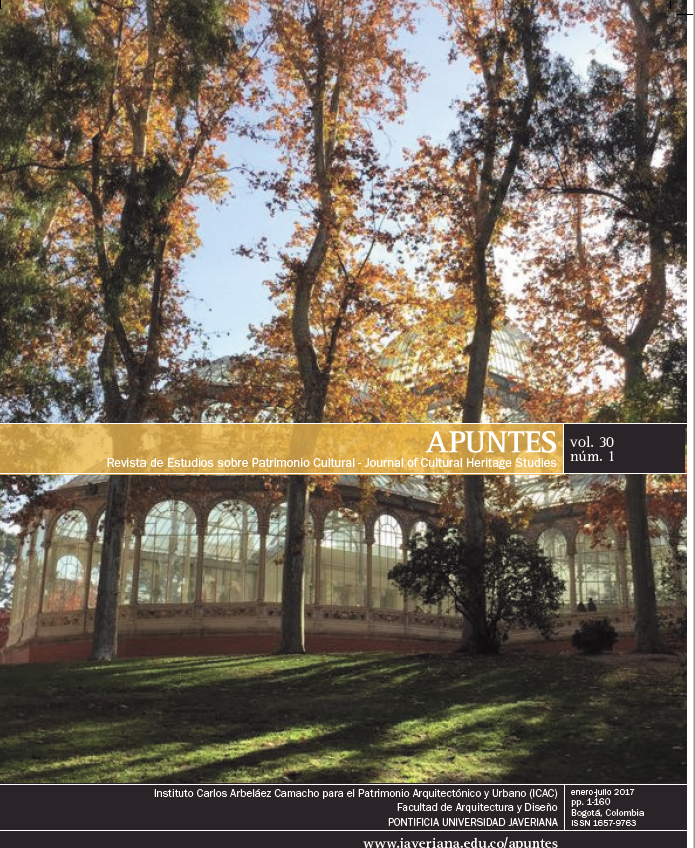Abstract
Based on the premise that true heritage consists of the knowledge that can be passed on to future generations, and as to contribute to the knowledge of architectural technology in heritage buildings, we have undertaken a research project on this subject. This article presents the first phase of this research where we carried out the review and analysis of 189 titles, including publications and research on colonial heritage architecture, or to be precise, of the Neo-Granadine period in Colombia. We demonstrate the little interest this aspect of architecture has generated and the vision that authors and researchers have about it. The knowledge disseminated so far is interrelated by means of the identification of the level of development for each one of the technological aspects. That said, today it becomes evident how urgent is the research on architectural technology as a measure for the responsible intervention of heritage and its preservation in case of material loss.
Apuntes is registered under a Creative Commons Attribution 4.0 International Public License. Thus, this work may be reproduced, distributed, and publicly shared in digital format, as long as the names of the authors and Pontificia Universidad Javeriana are acknowledged. Others are allowed to quote, adapt, transform, auto-archive, republish, and create based on this material, for any purpose (even commercial ones), provided the authorship is duly acknowledged, a link to the original work is provided, and it is specified if changes have been made. Pontificia Universidad Javeriana does not hold the rights of published works and the authors are solely responsible for the contents of their works; they keep the moral, intellectual, privacy, and publicity rights.
Approving the intervention of the work (review, copy-editing, translation, layout) and the following outreach, are granted through an use license and not through an assignment of rights. This means the journal and Pontificia Universidad Javeriana cannot be held responsible for any ethical malpractice by the authors. As a consequence of the protection granted by the use license, the journal is not required to publish recantations or modify information already published, unless the errata stems from the editorial management process. Publishing contents in this journal does not generate royalties for contributors.


